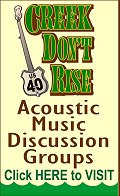 15-Chorder Tweaking overview |
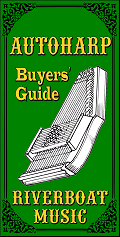 |
| 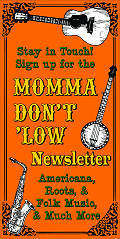

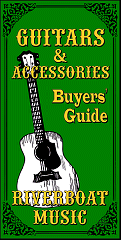
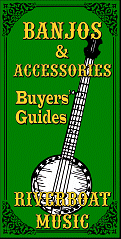
|
15-Chorder Tweaking OverviewAutoharps are among the most "tweakable" instruments in the world. Anyone with a few ordinary tools can change the sequence of the chord bars. With a bit more effort and resources, almost anyone can change the chord bars to make chords that the manufacturers never provided.Harpers like 21-chorders because they are so easy to tweak. But 15-chorders have a great deal of potential for customization, too. And used 15-chorders in playable condition are a lot easier to come across than good used 21-chorders. Some folks even prefer them for certain kinds of projects.
The most common chord bar arrangment on commercial 15-chorders is shown to the right. If it seems illogical, that's because it grew up out of earlier chord bar arrangments that were designed in the 1880s, and suited certain kinds of music that are seldom performed these days. Don't Try This At Home (Yet). This page is simply an overview of some of the ways people reconfigure their 15-chord autoharps to better suit their needs. You shouldn't attempt any of these tweaks until you have studied the 15-chord section of our Autoharp Repair Overview page, at least. But if you have a 15-chorder and you've been thinking, "It would sure be nice if D was closer to G," or " . . . if I had an Em instead of an E7 I never use," this can hopefully point you toward useful suggestions. E7 to Em Modification - As an example, modern music in C or G is much more likely to use E minor than E7. One of the most basic tweaks you can do on a 15-chorder is to change the E7 to Em. Anyone used to playing a 15-chorder will be confused, but if it's your chief autoharp, and you generally play Folk, Bluegrass, or Country, you'll probably find this setup more helpful. If any such tweak appeals to you, start out by reading our Autoharp Repair Overview. It describes how the things go together, what makes them work, and how to - hopefully - keep from losing springs or otherwise causing unforsee problems when you take them apart. To download a PDF "cheat sheet" on how to do the E7 to Em change specifically, click here. Note About Early OS45 "Appalachians" and Chroma "Bluegrass" - If you can get your hand on one of these, you'll have a head start on reconfiguring it for Folk, Bluegrass, or Country use. Tips on those models are provided in our article "Tweaking the Appalachian and Bluegrass."
Because they couldn't easily slide the buttons up or down, they wound up with arrangements that were actually hard to play. Besides buttons in the same row being next to each other, which could be awkward, the shape of the three-chord patterns they used for most songs was different for every key! The fact that most 15-chorders with such setups have come down to us looking very used means that the owners adapted and played the heck out of them. But it was hardly optimum. Note: A small handful of 15-chorders built in the 1960s and early 1970s had a chord bar setup that was easier to reconfigure into a usable arrangement. If you have one of those you may be "ahead of the game" in a sense. See our article "Tweaking the Appalachian and Bluegrass for more information. Changing Chords? - In addition to the E7 to Em chord bar tweak described above, lots of autoharp players playing in genres like Folk, Bluegrass, and Country tend to play song in guitar-friendly keys like G and D, and sometimes A and E. Consequently, they never use the Eb or F7 chords. So when they're moving things around, they rework those chord bars to create chords they need more, like Bm and F#m. (We call such conversions "Folk- and Bluegrass-Friendly and have a number of articles about them, starting here.) Sadly, it's hard to make repainted buttons look as nice as the store-bought ones, but that's a trade-off they're willing to put up with if it means they can play their favorite songs in guitar-friendly keys like D. Chromatic or Diatonic? - One consideration if you're changing things around on your autoharp is whether you need all the notes on your autoharp. After all, if you're never going to play Eb, Bb, or F ever, you can get a richer sound if you tune the Eb down to D and Bb down to A, then notch the chord bars that use those notes to open up those extra strings. A "diatonic" autoharp goes all the way and includes only the notes needed for one key, say C or G. "Semi-diatonic" autoharps allow you to play in two keys (say G and D), while retuning all the strings that you don't need in those keys. Then when you play the chords you do use, important notes in those chords are doubled, giving you a richer sound.
The picture to the right shows a possible arrangement for a "G/D" autoharp that would play well in G and D, as well as most songs in A. That said, going to an arrangement like the one at the right will require moving chord bars and buttons around, plus cutting felt for new chords like Bm. Many folks who consider such a project go to a three-row setup (below) while they're at it. For detailed suggestions about the chord bars and string tunings you would use for the G/D setup shown above right, check out our article on George Foss' G/D Autoharp Reconfiguration. For transparency's sake, though, I'll admit that neither George Foss nor Bob Lewis, who also wrote extensively about diatonic autoharps favored sticking with a two-row setup. If you're a fan of Folk or other guitar-friendly genres, you may decide that a diatonic or semi-diatonic autoharp is the best approach to support your favorite music. And once you've set up one diatonic or semi-diatonic 15-chorder, you'll realize just how cheap good used 15-chorders are compared to 21-chorders, and consequently, how affordable it would be to have, say, an F/C, a G/D, and an A/E autoharp. You may never need to buy a 21-chorder again. Though, to be honest, many fans of diatonic autoharps also keep at least one chromatic autoharp around for jamming with folks who like playing in keys their diatonic autoharps don't handle.. For more information on diatonic autoharps, check out this article. A Plug for Junkers - Before you begin any major changes on your only good autoharp, you should consider finding one that's cheap and "expendable." Yes, that's a lot easier in the US than it is in many other parts of the world. But it's worth a try. Ironically, quite a few harpers have found that - once they've cleaned up, tuned up, messed up, and fixed up a "junker" they bought to experiment on, it becomes one of their favorites. In most generations of autoharp manufacture since 1965, the 15-chorders and the entry-level 21-chorders used essentially the same construction. So you're not sacrificing sound if you reconfigure, say, a 15-chorder versus a 21-chorder. As a matter of fact, many fans of diatonic autoharps scour garage sales, flea markets, and second-hand shops to find old 15-chorders with good solid bodies that they can use as the basis for their next custom instrument. Three-Row Systems - When Oscar Schmidt introduced the 21-chord autoharps in the very late 1960s, they introduced two major improvements:
Since that system came out, autoharp owners have created countless variations. One of the most common puts the seventh chords on the top row, the major chords in the middle, and the minor chords on the bottom. The same setup usually sacrifices seldom-used chords like Ab, F7, and Bb7 so they can add useful chords like E major, B minor, and F# minor. For an overview of the most common variations on 21-chorders, click here. Yes, such possibilities may get your mouth watering, but they don't mean your 15-chorder is beyond hope. In fact, for some purposes it's nearly as useful as a 21-chorder, once you figure out how to get it into a 3-row setup. Three-Row Systems on 15-Chorders - Wouldn't it be nice if you could use such a useful system on your 15-chorder, while rearranging the chords any way you wanted. Well, it's not easy, but it is possible. Approaches include:
Once you go into a three-row system, you have all sorts of options.
Of course, if you want to play in F as well and don't mind losing the ability to play in E, you can just make the middle row Bb, F, C, G, D, A, and ajust the other chord bars accordingly. Yes, you would need to cut new felts for any such reconfiguration, but, frankly, that's easier than moving those buttons. :-)
To be honest, none of these solutions is anywhere near as easy or flexible as changing chords around on an Oscar Schmidt 21-chorder. But lots of autoharp players who've gone down this route have turned around and reconfigured additional autoharps for special purposes.
ConclusionSometimes autoharp newbies are afraid that they will somehow be "breaking the rules" if they tweak their autoharps too much.As you may realize by now, there are no rules. You just have to figure out what's best for you and the kinds of music you like to play. I hope to have more examples and tips eventually, but in the meantime, consider this an introduction the possibilities your humble 15-chorder represents. And maybe start looking for a beat-up old 15-chorder to experiment on. Finally, I don't want to leave you "hanging" on some point, so I will gladly answer questions sent to me through our contact page. After all, reader questions are the main way I get ideas for new articles. Best of luck! Currently Available Tweaking ResourcesOn our pages (or sister sites):
On Third-Party Sites:
*Diminished chords are made up of only minor third intervals, such as C, Eb, Gb. Usually "diminished chords" on autoharps include a fourth note, making them a "diminished seventh." So C, Eb, Gb, A. Only three diminished 7th chords are possible in modern "tempered" notation systems, but an autoharp must be chromatic - having sharps and flats - to play them. Click the back arrow on your browser to return to the text.
And please stay in touch! All material, illustrations, and content of this web site is copyrighted (c) 2001, 2002, 2003, 2004, 2005, 2006, 2007, 2008, 2009,
Note: HarpersGuild.com(tm) is Paul Race's name for his resources supporting the history and music of the North American Heartland as well as additional kinds of acoustic and traditional music.
For questions, comments, suggestions, trouble reports, etc. about this page or this site, please
contact us.
| |||||||||||||||||||||||||||||||||||||||||||||||||||||||||||||||||||||
